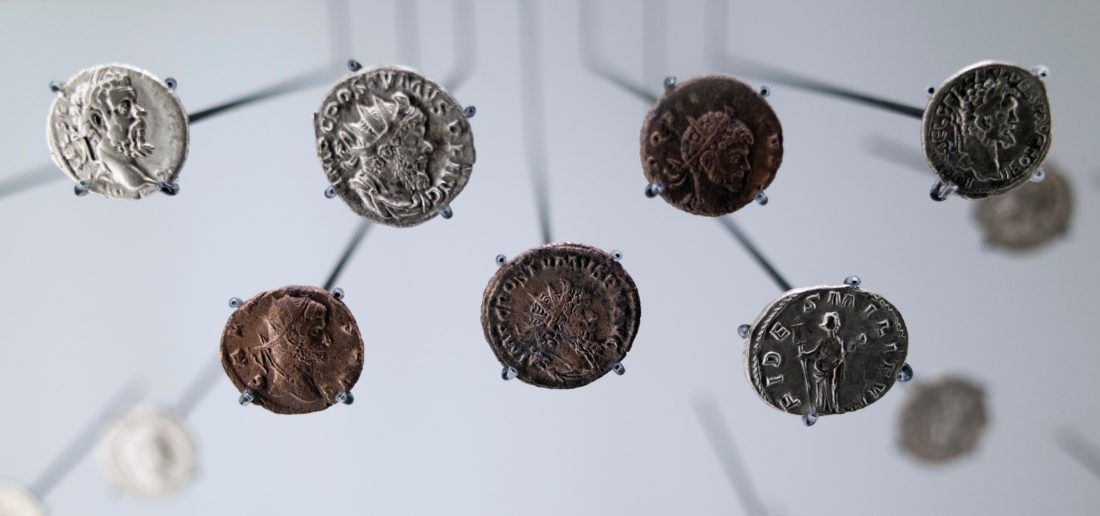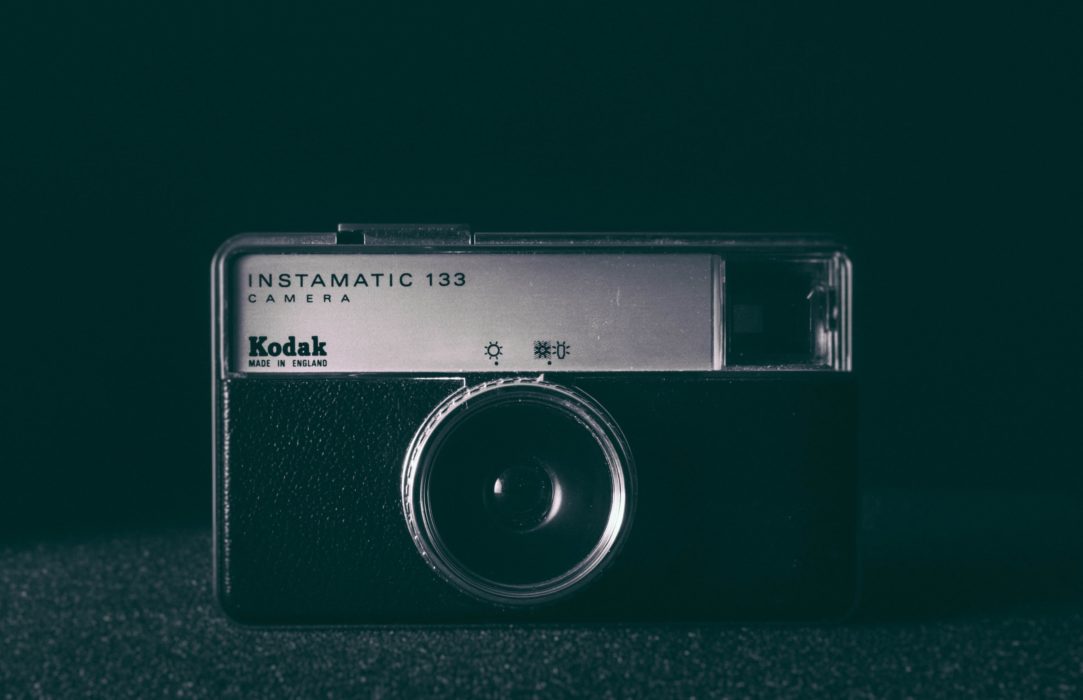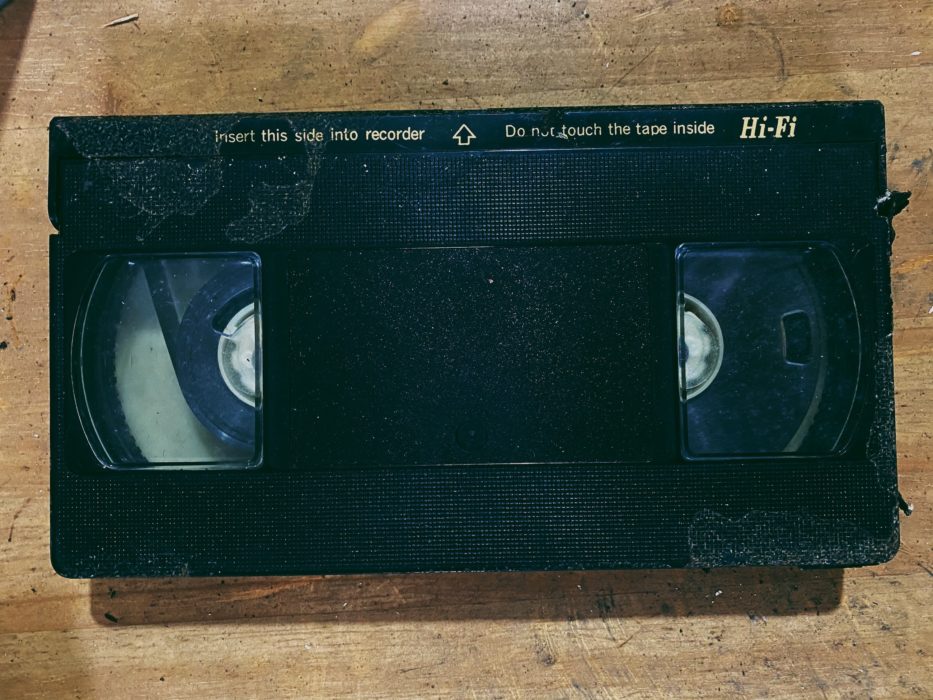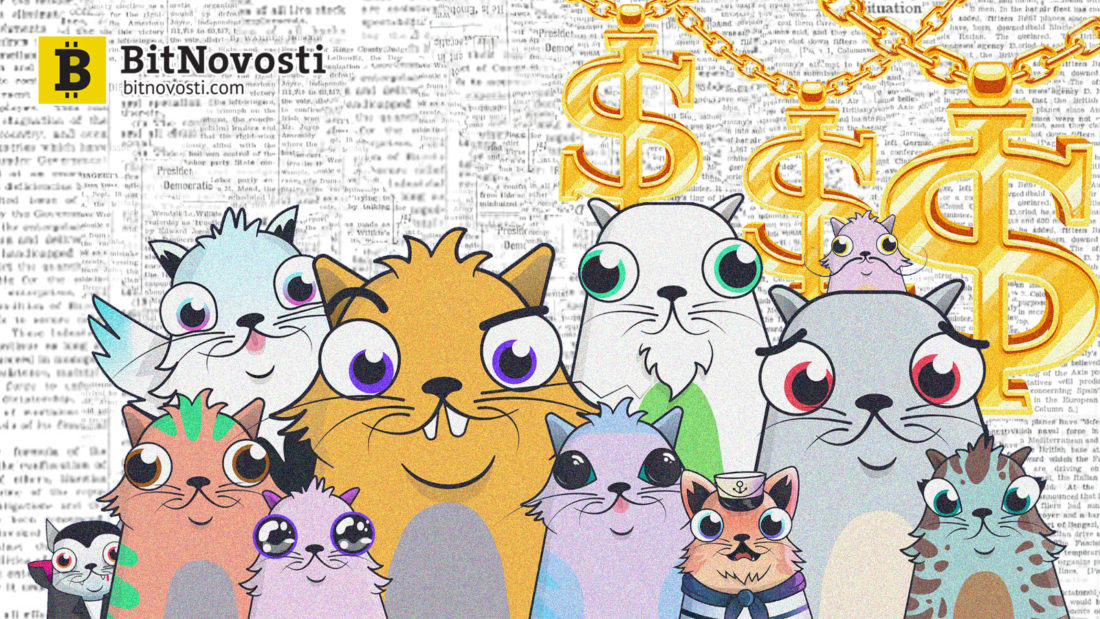After more than a decade of spectacular growth, most people still don't understandcryptocurrency.Bitcoin has far outperformed all other assets over the past decade, yet everyone from the popular media to most governments to prominent traders is blind to what it means for the future. India is threatening to ban cryptocurrencies, but if it actually takes such a stupid step, it could spell disaster for it. Prominent gold bug Peter Schiff continues to watch the price of the yellow metal stumble as Bitcoin zips by and makes his son rich.
</p>Over the past 10 years, journalists and publicindividuals everywhere have declared Bitcoin dead over 400 times and it just keeps proving them wrong. Pyramid. Has significant disadvantages. Fraud. Fake money. Useless. Meanwhile, Bitcoin skyrocketed from pennies to $60,000 per coin.
Whereas artists receive record amounts fortheir art with the help of non-fungible tokens (NFT), the latter are called a passing trend of fashion that will not last long. This is despite the fact that NFTs are implementing large franchises like the NBA.
If you are a supporter of cryptocurrency, it is easy to get caught intrap and think that all these people are just idiots who refuse to see the obvious. But that would be a terrible mistake. Many of these people are incredibly smart and successful. Why don't they see the value of Bitcoin and cryptocurrencies? How do they lose sight of what has surpassed all expectations for more than a decade?
To figure it out, you need to delve a little deeper into the history of money and human beliefs.
Tomorrow, tomorrow, tomorrow
To begin with, it's worth clarifying a few things:
Children of the future will not even remember paper and metal money.
The generations that follow Gen Z will grow up from birth with programmable, electronic money, and paper and metal money will only be encountered in history lessons.

: Unsplash
The reason is simple. Today's money is analog.This is "stupid" money. They are made of dead wood and metal. They are inert. Even the electronic version of them, which you send through the bank or through PayPal, is just an electronic record in the database. It is not really digital or programmable. If you put a dollar bill on the table, you cannot execute the smart contract with it. You can only keep it or exchange it for goods and services.
Don't get me wrong, paper andmetal money is an amazing technology. You probably don't think of them as technologies, but you do. What was required was a method of minting coins that would be difficult to replicate to avoid counterfeiting, and this was a simpler form of advanced printing techniques that are now being used in central banks using highly specialized machines. These are analog technologies.
Metal and paper money centeredvalue in a single, universal form, on which everyone agreed, and quickly supplanted barter, which was highly ineffective. Thanks to them, people no longer needed to count how many cows to exchange for grain.
How much grain is this or that number of cows worth?Bartering was imprecise and inconvenient because the person to whom you gave the cows needed a place to keep them. Now he has cows and is rich, but what if someone doesn't need cows? How will he buy stones to build a house if the stonebreaker already has enough cows?
Metal and paper money solved the dilemmabarter. Now the owner of the cows could sell them for coins and exchange those coins directly for what he needed. The grain merchant could exchange grain for money and buy stones with it to build a house, without the need to arrange bilateral trade negotiations between the owners of the cows and stones.
Analog money was fantastic,versatile technology to save cost. Just look at the coin and you will know how much it costs, because everyone else is willing to accept it. This changed the world and the development of our civilizations.
But the time for analog money is quickly drawing to a close.
Digital technologies are much more flexible, and they will allow money to develop in a thousand new directions that we are just starting to get an idea of.
Tomorrow's money is smart money.

: Unsplash
Just like digital cameras have supplantedtheir analog predecessors, digital, programmable money will replace the old paper money. Kodak has controlled 90% of the film market for a century, but did not anticipate the arrival of digital cameras in time and preferred to view them as something temporary. The company was right at first.
Digital cameras were slow and cumbersome. They could not achieve instant endurance. They didn't have the clarity of traditional film.
Until the engineers have solved all these problems.
And in 5 years, Kodak has gone from being a 100-year-old leader to bankruptcy. This is how innovation can overwhelm those who voluntarily turn a blind eye to the future.
But if you look at Kodak with disdain, becausethat she didn’t notice the obvious, look at your own predictions and I’m sure you didn’t foresee most of today's innovations. When I started working on the Internet in the late 1990s, everyone told me that I was crazy and that the Internet was a waste of time. He's only for nerds and fools. It is slow, uncomfortable and ugly. They said the same thing when I went to work for a Linux company. Now the Internet is as ubiquitous as air, and Linux supports all kinds of devices around the world.
The point is, most people justunable to see the future. They are unwaveringly focused on the present. This is understandable from an evolutionary point of view. We have been running through the forest for several million years, hunting and collecting the gifts of nature. Focusing on finding food and avoiding predators made sense if we wanted to survive. Thinking about the predators of the future was useless. Looking into the future and imagining what it would be like was the lot of the tribal shamans and medicine men, and the rest were focused on not dying a terrible death.
We only started living in cities 8,000 to 10,000 years ago. Civilization literally means"life in the city"... Our brains didn't have enough time to develop a new way of thinking about the world. Most people have not adapted to see beyond the present moment.
I've spent my whole life staring athazy haze of the future and gradually realized one critical difference between how I see the world and how most others see it. I look at general patterns, but most people focus on a much smaller scale. I've been looking at abstraction abstractions for decades, centuries, and even millennia. Because others focus on short timeframes, they usually see the stages of technology, whereas I look at their categories. Home video is a category. Betamax, VHS, DVD, Blu-ray and streaming videos are the stages of this category.
The problem is that most people mistake the current stage of technology for a category. This is a serious mistake that makes it almost impossible to see the future clearly.

: Unsplash
People look at something like Betamax and projectits current characteristics are infinite into the future. They see something unsightly, substandard, and incapable of making a two-hour film, and they project these limitations onto the entire technology, believing that it will never work.
They do not realize that engineers are constantly dealing with similar problems and their solution is only a matter of time.
The same is happening today with digital money.People look at current versions of cryptocurrency, see great waste of energy, slow transactions and volatile prices, and imagine these problems will last forever. This leads to myopic attacks on technology and fear-driven rhetoric. But the same thing is happening in cryptocurrency as in any other technology. The early stages are replaced by new ones.

illustrations: BitNews
Take CryptoKitties for example.Several years ago, this app hit the limit of the Ethereum blockchain. This collectible game of raising and selling cute digital kittens has become a real hit. But she faced slow transactions and limited Ethereum scalability. Most people discount it, but they mistook stage for a category.
The category here is "collectible objects". The global collectible market, spanning everything from rare toys to autographed cards by athletes, is valued at $ 37 billion.
CryptoKitties Creators Realized To Get Outoutside of Ethereum. They needed a new type of consensus and a faster and smarter blockchain, and so they created Flow. This is already a sign that engineers are learning from the past, and at a much faster pace. Flow has near-instant calculations, fast scaling, and updatable smart contracts. Renewable smart contracts are indispensable if we want the ecosystem to truly evolve over time. If there is a bug in a smart contract, then it should be possible to quickly fix it before it becomes impossible to change something.
The Flow blockchain is now used by big businesses like the NBA, which is very familiar with the collectible market, as sports cards have dominated this arena for decades.
The artist Ben Mauro, whose art I no longer loveone year, recently sold his first series of collectible cards on Flow for $ 2 million - an incredible amount for an artist. Ben was a successful artist by all standards even before the sale of NFT. He has worked on films like Elysium - Heaven Not on Earth and games like Call of Duty: Black Ops. But while the companies that issued them earned hundreds of millions of dollars from his work, he himself barely had enough to live on. NFTs, like blockchains and cryptocurrencies, are capable of turning the situation upside down and allowing artists to generate direct income from their work.
I must admit that until recently I was a little skepticalbelonged to the NFT. I made the same mistake as everyone else. I still sometimes refer to my "reptilian brain" focused on the present. I saw a potential long-term perspective in this technology, but did not understand how it would ultimately work. In other words, I was looking at the technology stage, not the category.
But now the blinders are off.
There will be a lot in future versions of digital collectibles that are not there now, and this is just the beginning of a larger revolution in the world of money.
Elimination of intermediaries
Nobody likes intermediaries except the intermediaries themselves.

: Unsplash
We all hate speculators because we can'tpurchase PS5 at a reasonable price, as bots buy up all stocks in a matter of seconds so that speculators can resell them on eBay for two to three times more. The speculators like it, but everyone else doesn't.
Banks are also intermediaries. So are the governments.
The main problem of today's "stupid" money inthat we must trust centralized intermediaries to store and move them around the world. Today, when you buy a house, your money is deposited into an escrow account at some centralized institution. After the contract is signed by both parties and enough time has passed, the money is transferred to the seller.
Such intermediaries will not be needed tomorrow.A small program will reserve the money on its own and transfer it when both parties digitally sign the contract. This is the whole point of the hype around decentralized finance. Tomorrow you will have an easy way to directly lend money to people you have never seen and earn interest from it instead of banks. And in the same way it will be possible to take out loans. You will not need to go to the bank and ask him to give you money. You will get them from a pool of small investors who will receive real interest on their money instead of the meager sums that a bank savings account brings in today.
But it will be tomorrow. Today everything is different. Today, paper and metal government money dominate the world.
Although the market capitalization of Bitcoin over the pastyears have skyrocketed to over a trillion dollars, it's still just a drop in the ocean. You can forgive those who do not see its true potential. There are companies with a larger market capitalization than Bitcoin, such as Apple, which has roughly double the value of all Bitcoin in existence. And this is not the only such company. Many of the world's oil companies, not to mention a retail giant like Walmart, are outperforming the largest cryptocurrency.
As you can see in this infographic, globalReal estate and derivatives markets also eclipse cryptocurrency, as does the M2 money supply, which includes all the money in the world, including cash, savings and deposits, and currently stands at $ 95 trillion.
But in the next decade, these numbers will beginswap places, because the M2 money supply will be nothing more than electronic money, which includes private cryptocurrencies and digital currencies of central banks. Cash will disappear. This is already happening in different parts of the world, in advanced countries like China, where even the homeless is paid alms using QR codes.
As the M2 becomes more and moresynonymous with cryptocurrency, the world will be very different from what it is today. It will have a variety of microtransactions for everything from your favorite web pages to newsletters and buying sourdough bread at your local bakery. If you love the bakery, you can buy its share on a peer-to-peer exchange and add it to an ever-changing portfolio of assets that generates unprecedented passive income for ordinary people around the world. You will not be using the card, you will be using a QR code by eliminating intermediaries such as Visa and MasterCard.
Rest assured, money is about to change dramatically. And this is one of the main reasons why people still don't understand cryptocurrency.
The world of the future will bear little resemblance to the world of the present, which makes it much more difficult to see it.
To understand why, you need to know a thing or two about rum.
Yo-ho-ho, and a bottle of rum
The main reason people don't see a future with programmable money is because they've only dealt with one type of money their entire lives.
The money was always the same. They are issued by states. That's all they know.
Decentralized, programmable money,issued by the protocol itself are something completely different. Such money goes beyond the present, extending into future millennia. This is a transition from one type of money to another. This has happened many times in the past, but not in front of anyone alive today. And for most people, looking beyond their own lives is something almost impossible.
The idea that private money is possible ormoney not issued by some central authority is beyond their understanding. It is as if aliens flew to us, whose spaceships and weapons do not obey the laws of physics we know. They shoot lasers that do not move in a straight line, but turn freely, aiming at people.
Long-term patterns are incredibly difficult for humans to digest and understand. We are masters at recognizing short-term patterns. We learn by abstracting short-term patterns.
This usually works really well.We focus on the immediate threats and joys of life in the here and now. This limits the amount of brain activity it takes to understand something that we haven't seen before. If we can match something new to a pattern we've already seen, we don't need to spend a lot of energy trying to understand it. Thinking is difficult and requires a lot of energy. If we didn’t have short paths for thinking, then we would fall off our feet and we would have to eat incessantly, like gorillas who chew raw food all day.
When we cut ourselves once with a knife, weabstracting the concept of sharpness. We don't have to cut ourselves with a sharp stone to know that it hurts too. We don’t need to use a needle to know to avoid it. We already know this because we are abstract machines.
But this recognition of short-term patternscan let us down badly. When something really new appears, our higher brain needs to turn on and perform complex operations in order to understand it. Most people don't bother themselves. If this does not pose an immediate threat or benefit to them, then they do not care much, so they rely on their lower, reptilian brain. This is the part of the brain where reflexes are triggered and patterns are quickly recognized. When we cross to the other side of the street, because someone is randomly waving their arms in our direction and shouting furiously, we do not need to carry out a bunch of operations. Our reptilian brain is triggered, and the pattern of detecting dangerous and unbalanced people is usually enough to keep us alive.
A pattern that everyone has seen their whole life nowliving are "stupid" money issued by states, so it is difficult to see something else. The modern world is ruled by states. Everyone lives in some kind of state with clear and stable borders, a flag and an anthem.
But, as Yuval Harari writes in “21 Lessons for the XXIcentury ”, most of history was not so. Borders were flexible and could change overnight when one nefarious conqueror was killed by another, who seized power and reshaped the map. Power and boundaries could change several times during one human life. One could wake up under the rule of a tribal group one day and an expanding empire the next.
In a terrifying era of warring provinces in Japan,when powerful generals fought for territory in a brutal civil war that lasted 125 years - four generations - rulers changed dozens of times.
Money was also very different then.They were often more decentralized because there was little confidence that the current government would last long. Mainly, commodity resources such as salt, silk or alcohol were used as trading instruments.
It's enough to get a quick glance at the history of money,to understand that money is not a fixed idea. They are constantly evolving. They were decentralized and issued by a central government. They rested on the people and on the power of empires. Here are some of the things that have served as money throughout human history:
- Silk;
- Strong drinks (such as rum);
- Salt;
- Bark;
- Shells;
- Livestock;
- Metals;
- Coins.
Fearless merchants who dared to travelthe ancient silk road with their goods, they used silk because it was a highly concentrated form of wealth. However, the idea that money should have an independent value is wrong. If people think something is valuable, then it is valuable. It's simple. Silk may have been rare and difficult to produce, but it wouldn't be worth anything if people didn't consider it beautiful and precious.
Gold beetles will tell you that gold isthe only real money and that it has useful value. But gold has no value in itself other than what we assign to it. It is beautiful and shiny, and beautiful and shiny attracted people long before there were semiconductors that use the yellow metal.
Gold was used as money becausethat it was relatively rare and looked beautiful on princesses' necks when made into jewelry. Its useful value is practically nil. Compared to other precious metals, it is not the hardest and not the best conductor. And diamonds and graphene are many times stronger than it. So are carbon fibers.
If you want real utility, take a look, for example, at lithium, which is used in electronics, batteries and medicine, but we do not use it as money.
Gold has value because we say so. And the same goes for all money that has ever existed.
Anything that can save value canact as money. Read A History of the World in Six Glasses and you will see why rum was used as money and dominated the hideous and disgusting slave trade in Africa and America.
Rum was a highly concentrated form of wealth.Water has suffered disease for most of human history, so everyone from very young to very old drank beer, wine or stronger drinks. They were usually watered down, so people weren't drunk all day. The presence of highly concentrated alcohol meant that it could be diluted for much longer, so it lasted for a long time. Like drugs today, it was possible to reduce the dose for the same effect, which meant that it would last longer and the reduction in its cost could be extended.
American slave traders paid Africanslave traders their favorite form of concentrated wealth - rum - because it was durable, it was cheap to produce, and it served as a better store of value than anything else at the time. In fact, in the early years of American power, international trade was dominated not by the American dollar, but by the rum.
Dark side

: Unsplash
There is another reason why people do not see a future with programmable money: fear.
The new is scary. It changes the habitual way. People don't want to change anything. The changes could mean they are on the wrong side of the winning equation right now. People don't want to be left to fend for themselves.
Banks see cryptocurrency as a threat to theirexistence, and rightly so. Banks will not disappear, but they need to radically adapt their business model or burn out. Most will not survive. They will voluntarily close their eyes while staying true to their current business model. For many, the fate of Kodak awaits. However, some will be smart enough to survive, placing their hopes not on the present, but on the future. Others will accumulate patents and try to work their way to profit through the courts, but this is not a business model and they will also die out, because patent trolls are parasites of the modern world.
Governments fear new money the most.
The rulers of modern states havedivine authority - the exclusive right to issue and distribute money. This makes them the rulers of the economy and international trade and gives them power over everyone's life. Whoever controls money controls the world.
They do not want to give up this power and will not give it up so easily.
Authoritarian and authoritarian countries are even more worried. They are worried about the ability of cryptocurrencies to undermine their power and absolute control over the minds of their citizens.
And this is good.
Authoritarian governments are never on the sidepeople. They seized power, hiding behind the name and rhetoric of the people, the soul of the people with their vile, selfish, crazy politics. Cryptocurrencies, which they do not control, are capable of allowing people to break out of this slavery. Imagine if there was a truly scalable, ubiquitous international cryptocurrency with stable value - a near-perfect stablecoin that could be spent anywhere. In Venezuela, where crazy authoritarians have come to power who have significantly destabilized markets and money itself, leading to hyperinflation, people could simply switch to stable international money and wait out this regime or escape from its brutal rule if they had a chance to slip across the border.
Today, when power is seized by madmen, people for the most part are held hostage. But in the future, they will have the opportunity to escape the madness if they can take their money with them.
Cryptocurrency Attacks Will Hit By Authoritarian Regimesby themselves. They will ban it, as India is trying to do now. This scenario has worked for them for centuries, but it will not work well this time. They hope that by banning private cryptocurrencies, they will be able to exploit the power of the blockchain, but they will not succeed because they will not have anyone in the country able to develop or understand this technology.
The point is that blockchain is nothing without supportinghis coins. The coin allows him to work. Without a coin, it's just a distributed database, and a bad one. If people do not have the incentive associated with the coin, then they will not work with the technology and it will be as inert as others.
When over time other countries will adopt blockchainsand private currencies, they will absorb all the talent, while authoritarian governments will have only mediocrity trying to build a working blockchain that no one needs anyway and that no one will trust.
We have only one planet, and the power of individual states has already reached its zenith.
Just as the power of the samurai eventually gave waycivil government, the modern states that govern our lives will change in the coming centuries. Their power will not disappear overnight or even over the course of our lives, but it will slowly and irreversibly diminish, yielding to the international order of independent territories, whether the populists want it or not. Populists, as always, are on the wrong side of history, and their rage and fear are unable to stop the future.
No one can resist the waves of time.
The end is a new beginning
But maybe you still find it difficult to understand cryptocurrency? In fact, it is enough to understand one thing:
Cryptocurrency is smart money. It's programmable. Flexible. Intelligent Money today is stupid. Children of the future will not understand stupid money.
What does it mean cannot be instantly sent anywhere in the world? What does it mean that you cannot reserve money on your own when you buy something, and then unlock it when you receive the goods?
Today's money will look like the old onea phone that cannot be used to take photographs, text or use the Internet. Why will they be needed? Cryptocurrency is programmable money. It can be changed as you like, and you can do whatever you want with it. This is its real appeal.
Various technological barriers over timewill be resolved. Scaling? Ease of use? Private and public transactions? Control? All of this will be decided in the next decade or so. All this is being solved now, when new, better consensus systems appear and developers are learning from the blockchains of yesterday.
Today we see the same boring stories in popular media:
- This is not real money because only the government can issue it.
- Cryptocurrency is used for bad things.
- She wastes energy.
These stereotypes will soon fizzle out. Energy debates will disappear when we move to proof of stake and other consensus mechanisms.
About using for bad things already practicallynot mentioned except when the government wants to push through more restrictions at the last minute. Giant hedge funds and companies like Tesla and Twitter are already buying cryptocurrency. Coinbase has issued shares and is valued at $68-100 billion.
Cryptocurrencies are becoming increasingly popular.The very idea of money is also changing. For a long time, only governments could issue them, but if you look at history, it becomes clear how stupid this view is, so it too will soon lose weight.
The only thing that is constant in life is change. And all our "yesterday" only "illuminated the path to the dusty grave."
Silly myopic stereotypes are dying. Slowly but surely.
In 25 years, most people won't evenremember stupid money, printed on paper or minted in metal. There will be no more stories about cryptocurrency versus “real” money. People won't even know the word "cryptocurrency".They will just call it money.
</p>


